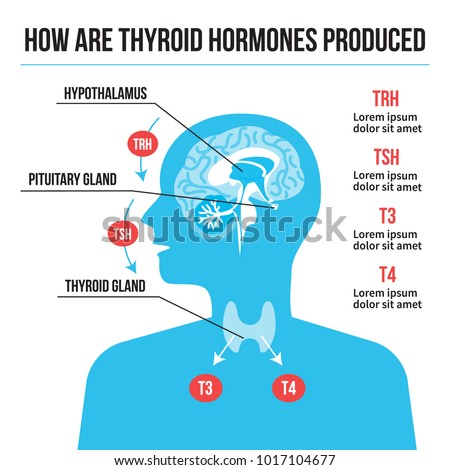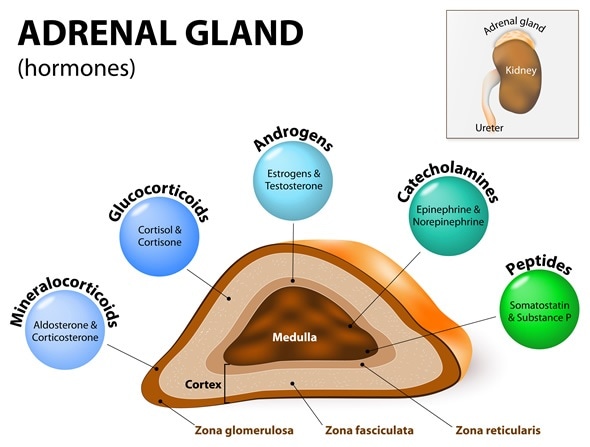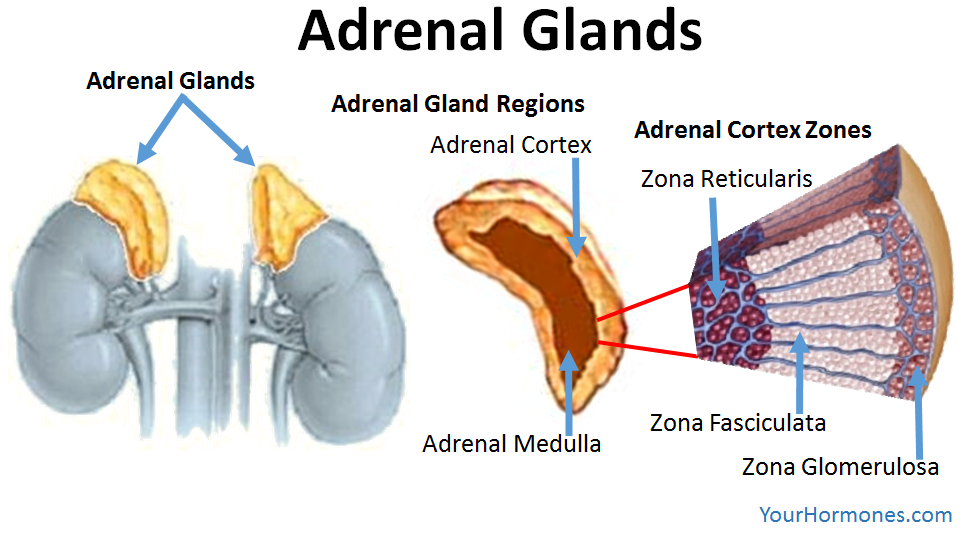ENDOCRINE SYSTEM
Human endocrine system
Group of ductless glands that regulate body processes by secreting chemical substances called hormones. Hormones act on nearby tissues or are carried in the bloodstream to act on specific target organs and distant tissues. Diseases of the endocrine system can result from the oversecretion or undersecretion of hormones or from the inability of target organs or tissues to respond to hormones effectively.
It is important to distinguish between an endocrine gland, which discharges hormones into the bloodstream, and an exocrine gland, which secretes substances through a duct opening in a gland onto an external or internal body surface.
Exocrine gland act on local tissues near the duct openings. In contrast, the hormones secreted by endocrine glands are carried by the circulation to exert their actions on tissues remote from the site of their secretion.
The endocrine system, in association with the nervous system and the immune system, regulates the body’s internal activities and the body’s interactions with the external environment to preserve the internal environment. This control system permits the prime functions of living organisms—growth, development, and reproduction—to proceed in an orderly, stable fashion; it is exquisitely self-regulating, so that any disruption of the normal internal environment by internal or external events is resisted by powerful countermeasures.
Most hormones are one of two types: protein hormones (including peptides and modified amino acids) or steroid hormones. The majority of hormones are protein hormones.
Protein hormones are highly soluble in water and can be transported readily through the blood. When initially synthesized within the cell, protein hormones are contained within large biologically inactive molecules called prohormones. An enzyme splits the inactive portion from the active portion of the prohormone, thereby forming the active hormone that is then released from the cell into the blood.
There are fewer steroid hormones than protein hormones, and all steroid hormones are synthesized from the precursor molecule cholesterol. These hormones (and a few of the protein hormones) circulate in the blood both as hormone that is free and as hormone that is bound to specific proteins. It is the free unbound hormone that has access to tissues to exert hormonal activity.
Hormones act on their target tissues by binding to and activating specific molecules called receptors. Receptors are found on the surface of target cells in the case of protein and peptide hormones, or they are found within the cytoplasm or nuclei of target cells in the case of steroid hormones and thyroid hormones. Each receptor has a strong, highly specific affinity (attraction) for a particular hormone. A hormone can have an effect only on those tissues that contain receptors specific for that hormone.
Hypothalamus
The hypothalamus is located in the lower central part of the brain. This part of the brain is important in regulation of satiety, metabolism, and body temperature. In addition, it secretes hormones that stimulate or suppress the release of hormones in the pituitary gland.
Many of these hormones are releasing hormones, which are secreted into an artery (the hypophyseal portal system) that carries them directly to the pituitary gland. In the pituitary gland, these releasing hormones signal secretion of stimulating hormones. The hypothalamus also secretes a hormone called somatostatin, which causes the pituitary gland to stop the release of growth hormone.
Pituitary Gland
The pituitary gland is located at the base of the brain beneath the hypothalamus and is no larger than a pea. It is often considered the most important part of the endocrine system because it produces hormones that control many functions of other endocrine glands. When the pituitary gland does not produce one or more of its hormones or not enough of them, it is called hypopituitarism.
The pituitary gland is divided into two parts: the anterior lobe and the posterior lobe. The anterior lobe produces the following hormones, which are regulated by the hypothalamus:
- Growth hormone: Stimulates growth of bone and tissue.
- Thyroid-stimulating hormone (TSH): Stimulates the thyroid gland to produce thyroid hormones (A lack of thyroid hormones either because of a defect in the pituitary or the thyroid itself is called hypothyroidism.)
- Adrenocorticotropin hormone (ACTH): Stimulates the adrenal gland to produce several related steroid hormones
- Luteinizing hormone (LH) and follicle-stimulating hormone (FSH):Hormones that control sexual function and production of the sex steroids, estrogen and progesterone in females or testosterone in males
- Prolactin: Hormone that stimulates milk production in females
- Antidiuretic hormone (vasopressin): Controls water loss by the kidneys
- Oxytocin: Contracts the uterus during childbirth and stimulates milk production
Thyroid Gland
The thyroid gland is located in the lower front part of the neck. It produces thyroid hormones that regulate the body's metabolism. It also plays a role in bone growth and development of the brain and nervous system in children. The pituitary gland controls the release of thyroid hormones. Thyroid hormones also help maintain normal blood pressure, heart rate, digestion, muscle tone, and reproductive functions.
Parathyroid Glands
The parathyroid glands are two pairs of small glands embedded in the surface of the thyroid gland, one pair on each side. They release parathyroid hormone, which plays a role in regulating calcium levels in the blood and bone metabolism.
Adrenal Glands
The two adrenal glands are triangular-shaped glands located on top of each kidney. The adrenal glands are made up of two parts. The outer part is called the adrenal cortex, and the inner part is called the adrenal medulla. The outer part produces hormones called corticosteroids, which regulate the body's metabolism, the balance of salt and water in the body, the immune system, and sexual function. The inner part, or adrenal medulla, produces hormones called catecholamines (for example, adrenaline). These hormones help the body cope with physical and emotional stress by increasing the heart rate and blood pressure.
Pancreas
The pancreas is a large gland located in the abdominal cavity just inferior and posterior to the stomach. The alpha cells produce the hormone glucagon, which is responsible for raising blood glucose levels. Glucagon triggers muscle and liver cells to break down the polysaccharide glycogen to release glucose into the bloodstream. The beta cells produce the hormone insulin, which is responsible for lowering blood glucose levels after a meal. Insulin triggers the absorption of glucose from the blood into cells, where it is added to glycogen molecules for storage.
Gonads
The gonads are responsible for producing the sex hormones of the body. These sex hormones determine the secondary sex characteristics of adult females and adult males.
- Testes: The testes are a pair of ellipsoid organs found in the scrotum of males that produce the androgen and testosterone in males after the start of puberty. Testosterone has effects on many parts of the body, including the muscles, bones, sex organs, and hair follicles. This hormone causes growth and increases in strength of the bones and muscles, including the accelerated growth of long bones during adolescence.
- Ovaries: The ovaries are a pair of almond-shaped glands located in the pelvic body cavity lateral and superior to the uterus in females. The ovaries produce the female sex hormones progesterone and estrogens. Progesterone is most active in females during ovulation and pregnancy where it maintains appropriate conditions in the human body to support a developing fetus. Estrogens are a group of related hormones that function as the primary female sex hormones. The release of estrogen during puberty triggers the development of female secondary sex characteristics
Thymus
The thymus is a soft, triangular-shaped organ found in the chest posterior to the sternum. The thymus produces hormones called thymosins that help to train and develop T-lymphocytes during fetal development and childhood. The T-lymphocytes produced in the thymus go on to protect the body from pathogens throughout a person’s entire life. The thymus becomes inactive during puberty and is slowly replaced by adipose tissue throughout a person’s life.
Endocrine Diseases
To ensure that everything runs smoothly (that is, your body functions as it should), certain processes must work properly:
- The endocrine glands must release the correct amount of hormones (if they release too much or too little, it is known as hormone imbalance).
- Your body also needs a strong blood supply to transport the hormones throughout the body.
- There must be enough receptors (which are where the hormones attach and do their work) at the target tissue.
- Those targets must be able to respond appropriately to the hormonal signal. The model here would be like primary hypothyroidism, where the pituitary produces TSH, the TSH is carried via the bloodstream to the thyroid, the thyroid has the appropriate receptors, but for whatever reason it isn’t able to effectively make or secrete thyroid hormone.
Endocrine diseases are common and happen even when one step in the process doesn’t work as it should.
















Comentarios
Publicar un comentario